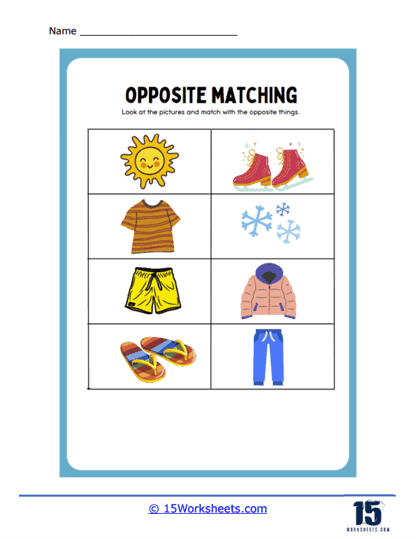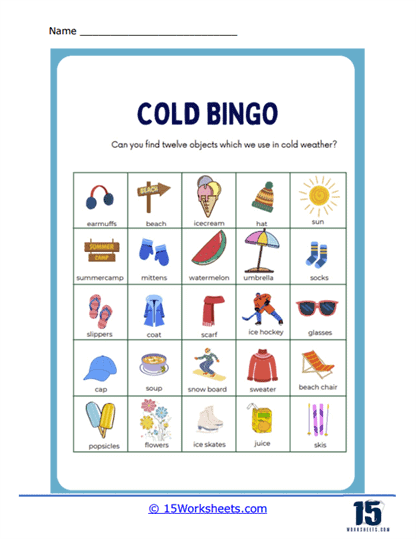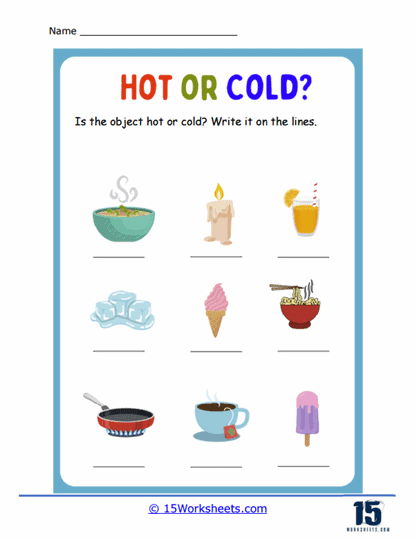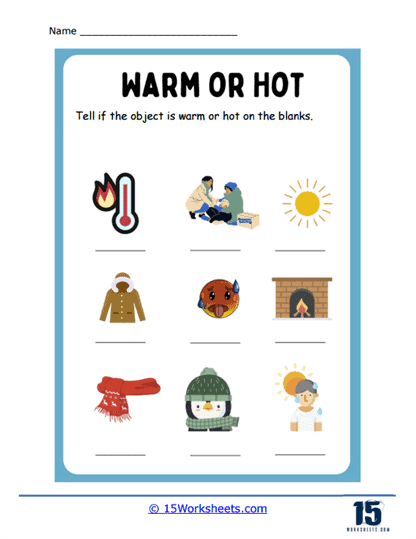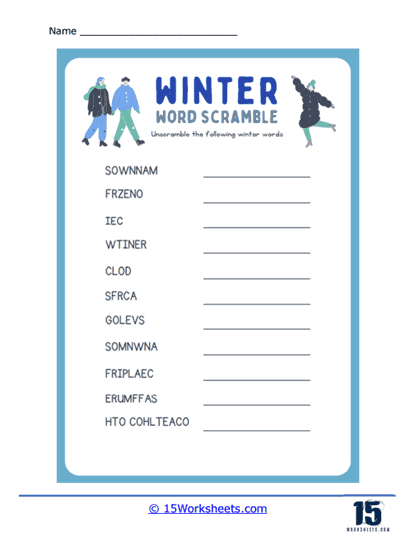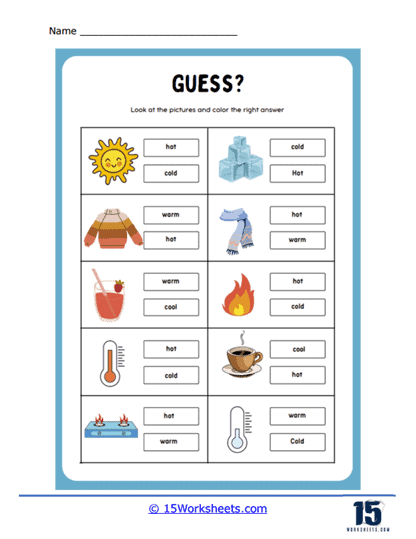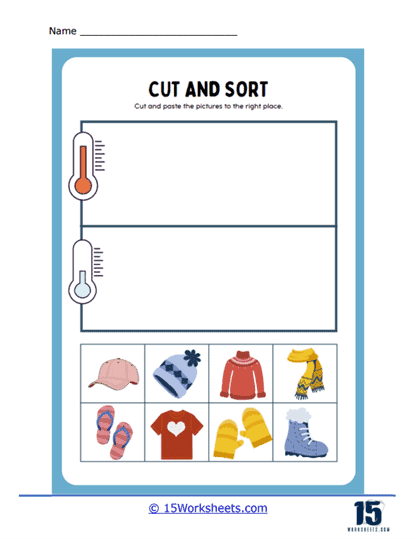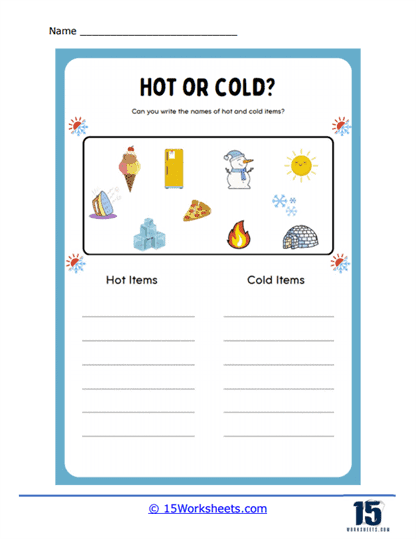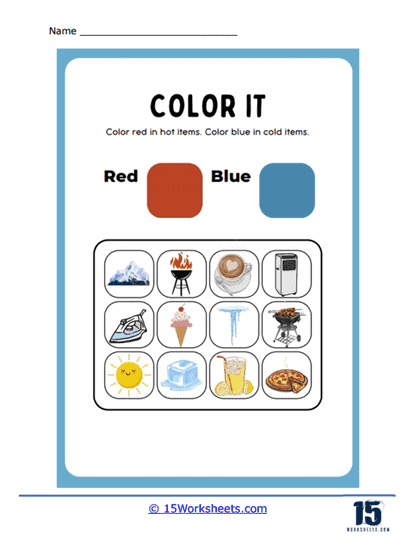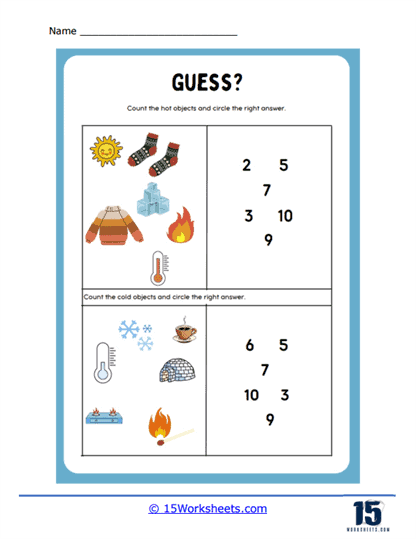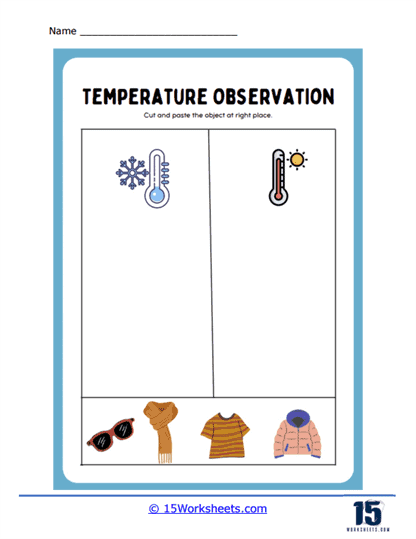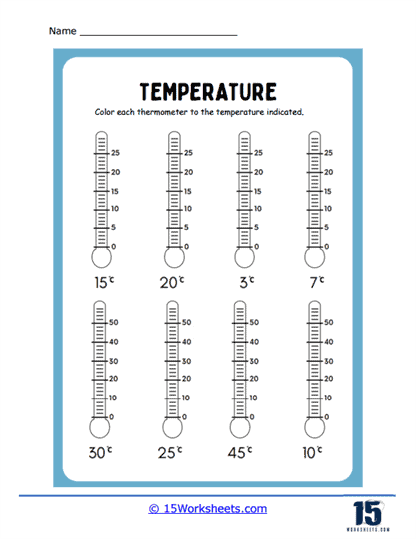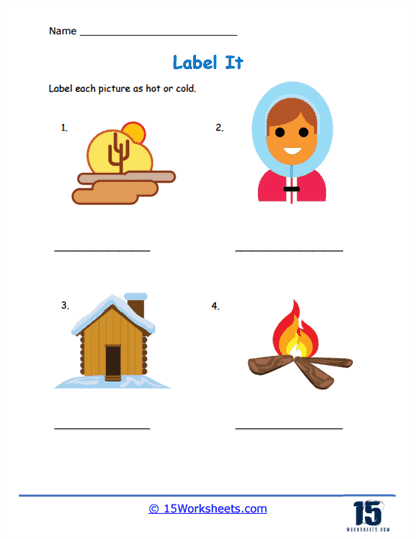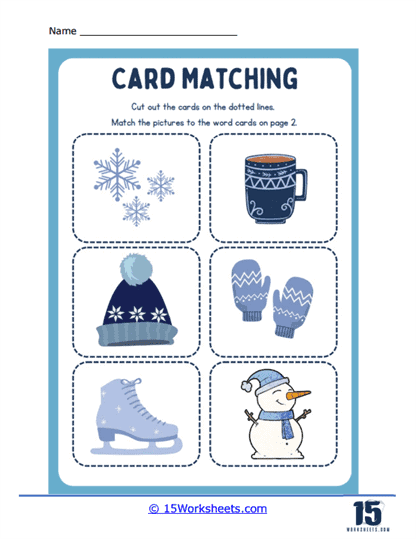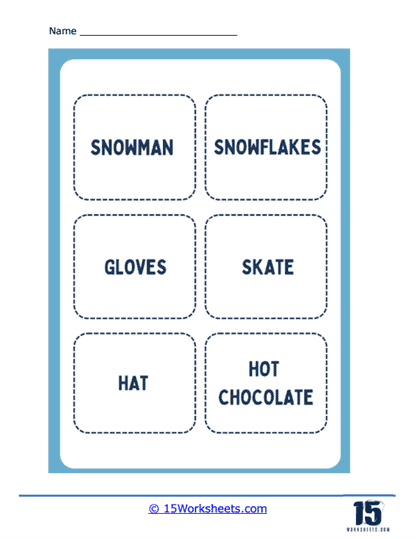Hot or Cold Worksheets
All About These 15 Worksheets
Preschool is a crucial time in a child’s development, marked by rapid cognitive and sensory growth. Engaging activities that foster sensory exploration and introduce basic scientific concepts are essential for nurturing young learners’ curiosity and understanding of the world around them.
This collection of Hot or Cold worksheets for preschool students provides an invaluable resource for educators and parents to engage children in sensory learning experiences while introducing fundamental science concepts. These worksheets offer hands-on, interactive lessons that not only stimulate sensory development but also lay the groundwork for scientific inquiry and critical thinking.
What Are Hot or Cold Worksheets?
Hot or Cold worksheets are educational resources designed to help children learn about and differentiate between the concepts of hot and cold, as well as to identify objects or situations associated with these temperature-related properties. These worksheets typically include activities that require children to recognize, categorize, or compare items or scenarios based on whether they are hot or cold.
Some common elements of Hot or Cold worksheets may include:
Sorting – Children may be asked to sort pictures or words into categories based on whether they are associated with hot or cold temperatures (e.g., ice cream, sun, snow, fire, etc.).
Matching – Worksheets may feature matching games where children have to connect hot or cold items with their corresponding descriptions or images.
Coloring Activities – Coloring pages can be used to teach children about the differences between hot and cold by having them color pictures or scenes associated with each temperature concept.
Comparisons – Children may be prompted to compare and contrast various aspects of hot and cold temperatures, such as the effects on the environment or the types of clothing worn in different temperatures.
Writing or Drawing Prompts – Worksheets may include prompts that encourage children to write or draw about their experiences or observations related to hot or cold temperatures.
Reading Comprehension – Short passages or stories about hot or cold temperatures can be used to help children practice their reading comprehension and critical thinking skills.
Hot or Cold worksheets can be used in various settings, such as classrooms, therapy sessions, or at home, and can be adapted to suit different age groups and developmental levels. These worksheets help children develop their observational, critical thinking, and language skills while also teaching them about the basic concepts of temperature and how it affects the world around them.
Teaching Tips for Temperature Differences
Teaching children about temperature and the concepts of hot and cold can be engaging and informative. Here are some tips to help you introduce these ideas effectively:
- Start with the basics: Begin by explaining that temperature is a measure of how hot or cold something is. You can then introduce the concepts of hot, warm, cool, and cold to help children understand the different levels of temperature.
- Use real-life examples: Give everyday examples of hot and cold items that children are familiar with, such as a hot cup of cocoa, ice cream, warm bath water, or a cold glass of water. This will help them relate the concepts to their own experiences.
- Sensory exploration: Let children experience different temperatures through touch. Provide a variety of objects with varying temperatures, such as a cold ice pack, a warm towel, or a room temperature toy. Ensure that the objects are safe to touch and not too hot or too cold to avoid discomfort or injury.
- Visual aids: Use visual aids, such as thermometers or temperature scales, to help children visualize the differences between hot and cold. Show them how the temperature rises or falls depending on the heat or coldness of an object or the environment.
- Temperature-related activities: Plan activities that involve different temperatures, such as making popsicles, baking cookies, or conducting simple science experiments. These hands-on experiences will allow children to explore the concepts of hot and cold in a fun and engaging way.
- Storytelling: Use stories or books that incorporate the concepts of hot and cold, such as stories about weather, seasons, or temperature-related adventures. This will help children connect the concepts to a narrative and make them more memorable.
- Use songs and rhymes: Teach children songs or rhymes about temperature, such as those about the weather or seasons. This will help them remember the concepts and make learning more enjoyable.
- Compare and contrast: Help children understand the differences and similarities between hot and cold by comparing and contrasting various objects or situations. This will encourage critical thinking and help them better grasp the concepts.
- Introduce related concepts: Once children have a basic understanding of hot and cold, you can introduce related concepts, such as weather, seasons, and climate. This will help them build on their existing knowledge and make connections between different topics.
- Be patient and consistent: Learning about temperature and the concepts of hot and cold may take some time. Be patient, and keep reinforcing the concepts through different activities and daily routines.
Remember to keep the learning process fun and engaging, and use a variety of teaching methods to help children grasp the concepts of hot and cold. With time and practice, they will develop a better understanding of temperature and its effects on their daily lives.
Benefits Of Hot Or Cold Worksheets To Students
This collection of Hot or Cold worksheets for preschool students serves as a valuable educational tool that promotes sensory development, introduces fundamental science concepts, and encourages critical thinking. These worksheets provide engaging and interactive ways for young learners to explore temperature sensations, fostering an understanding of the world around them and sparking curiosity about science.
Additionally, these sensory experiences enhance language development, safety awareness, and creative expression. By incorporating these worksheets into early education, educators and parents can inspire a lifelong love for learning, stimulate sensory and cognitive development, and equip children with essential skills and knowledge for future scientific inquiry and exploration.

